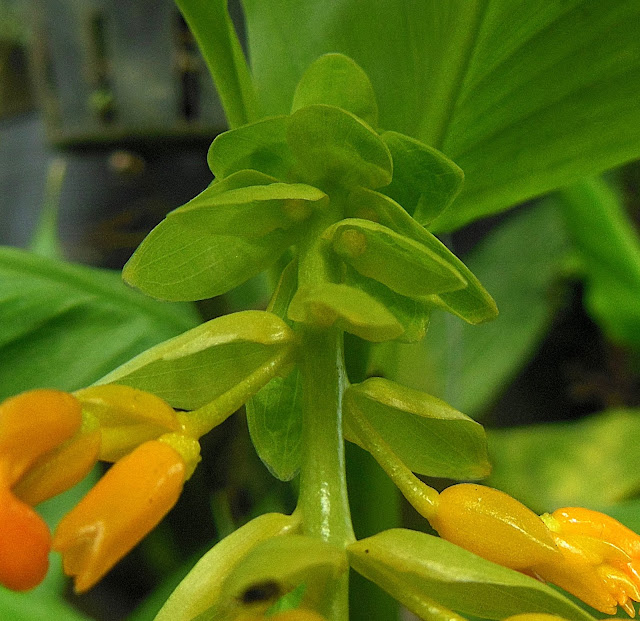Beautiful weeds P.4: Globba marantina
Four or five years ago, a German friend then living on Mindoro gave me small plants of what he said was a species of Globba, from the ginger family. He said he found them on the wild. It did not look like our most common Globba species, G. campsophylla, so I was curious to see its flowers and determine what it could be. The following year, the plant grew mature enough to produce flowers, which I then identified as G. marantina. Suddenly I wasn't too ecstatic about the plant anymore.
Globba marantina is found in a large swathe of territory encompassing eastern Asia to the Bismarck Archipelago. However, because of its weedy nature, the wide distribution may only be artificial. Philippine plants for example, are interpreted as escapees, although seemingly highly localized. An indigenous Globba species with similarly colored flowers is G. aurea from the island of Palawan, with erect inflorescences.
Globba marantina honors Venetian physician and botanist Bartolomeo Maranti (1500-1571). His name also appears, this time as a generic name, on the very popular Maranta (Family Marantaceae), which are much esteemed as garden plants due to their attractively marked foliage.
As pesky as it is, I have to be honest: G. marantina is a neat plant with interesting, eye-catching flowers. It is very easy to care for and blooms freely. But you need to be aware that its maintenance does not actually entail taking care of it, but getting rid of the bulbils and its plantlets!
Globba marantina is found in a large swathe of territory encompassing eastern Asia to the Bismarck Archipelago. However, because of its weedy nature, the wide distribution may only be artificial. Philippine plants for example, are interpreted as escapees, although seemingly highly localized. An indigenous Globba species with similarly colored flowers is G. aurea from the island of Palawan, with erect inflorescences.
Globba marantina honors Venetian physician and botanist Bartolomeo Maranti (1500-1571). His name also appears, this time as a generic name, on the very popular Maranta (Family Marantaceae), which are much esteemed as garden plants due to their attractively marked foliage.
 |
| Developing bulbils are clearly seen on the basal bracts of this inflorescence. |






Comments
Post a Comment